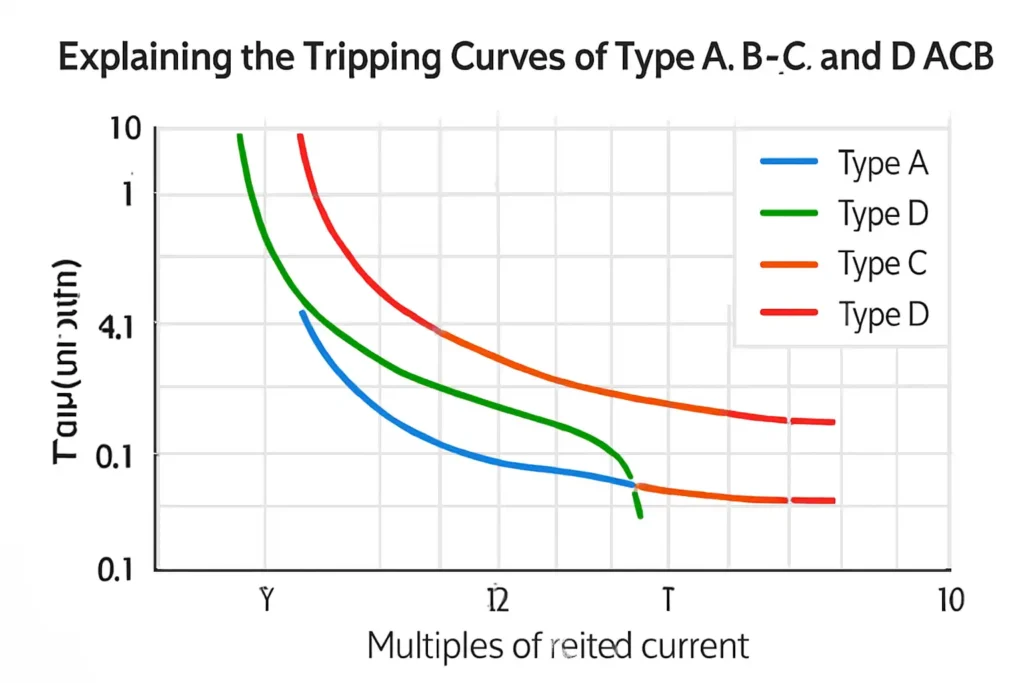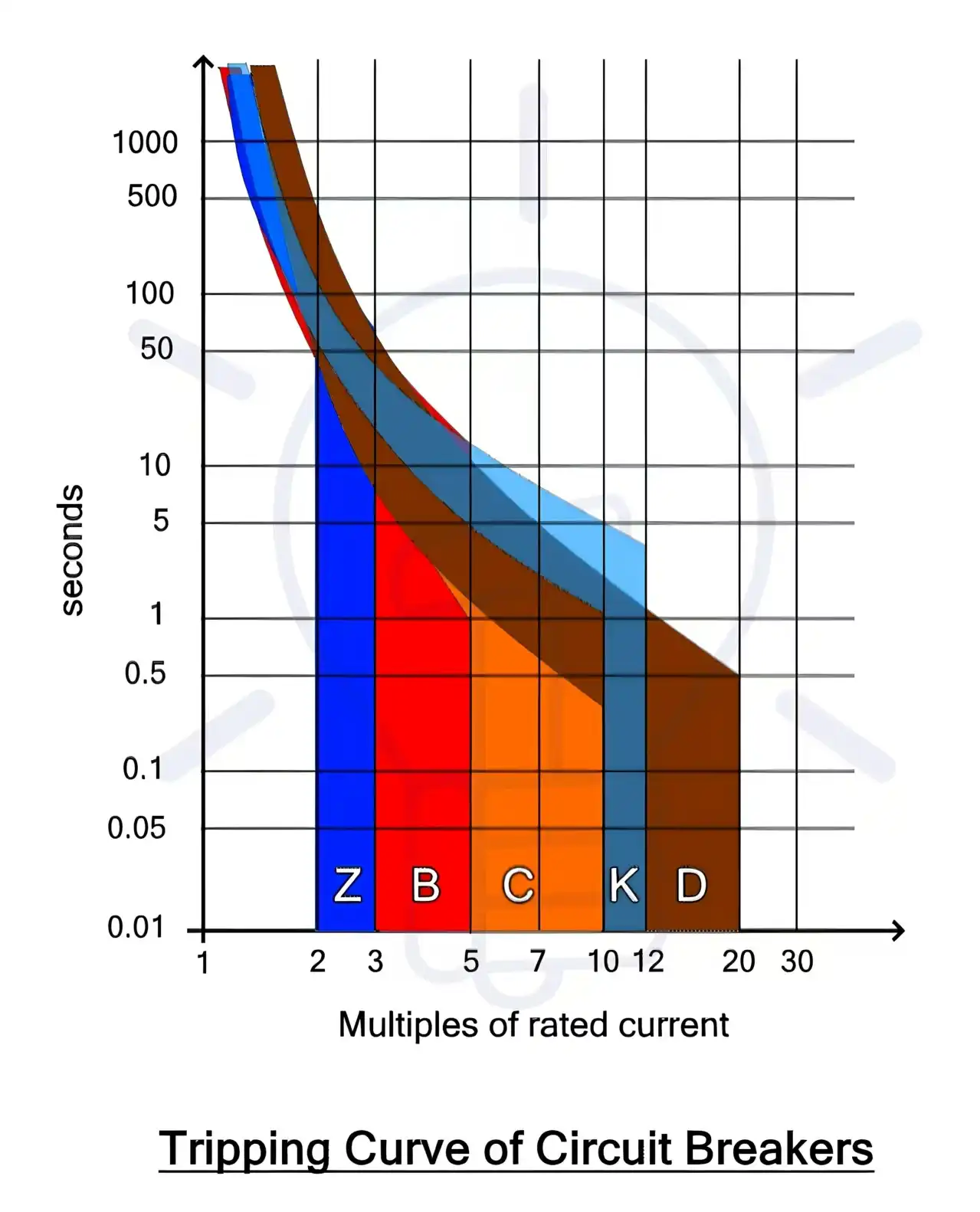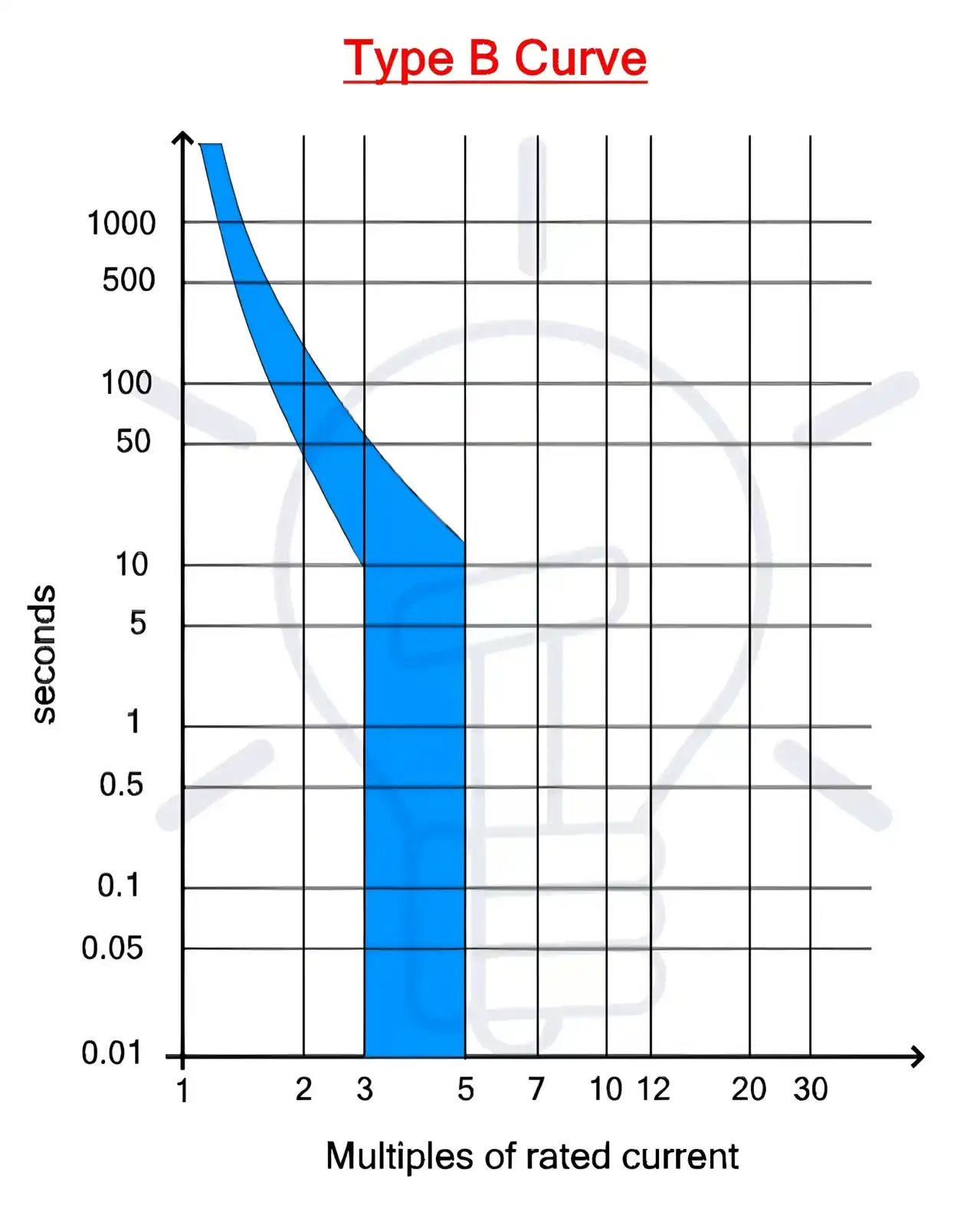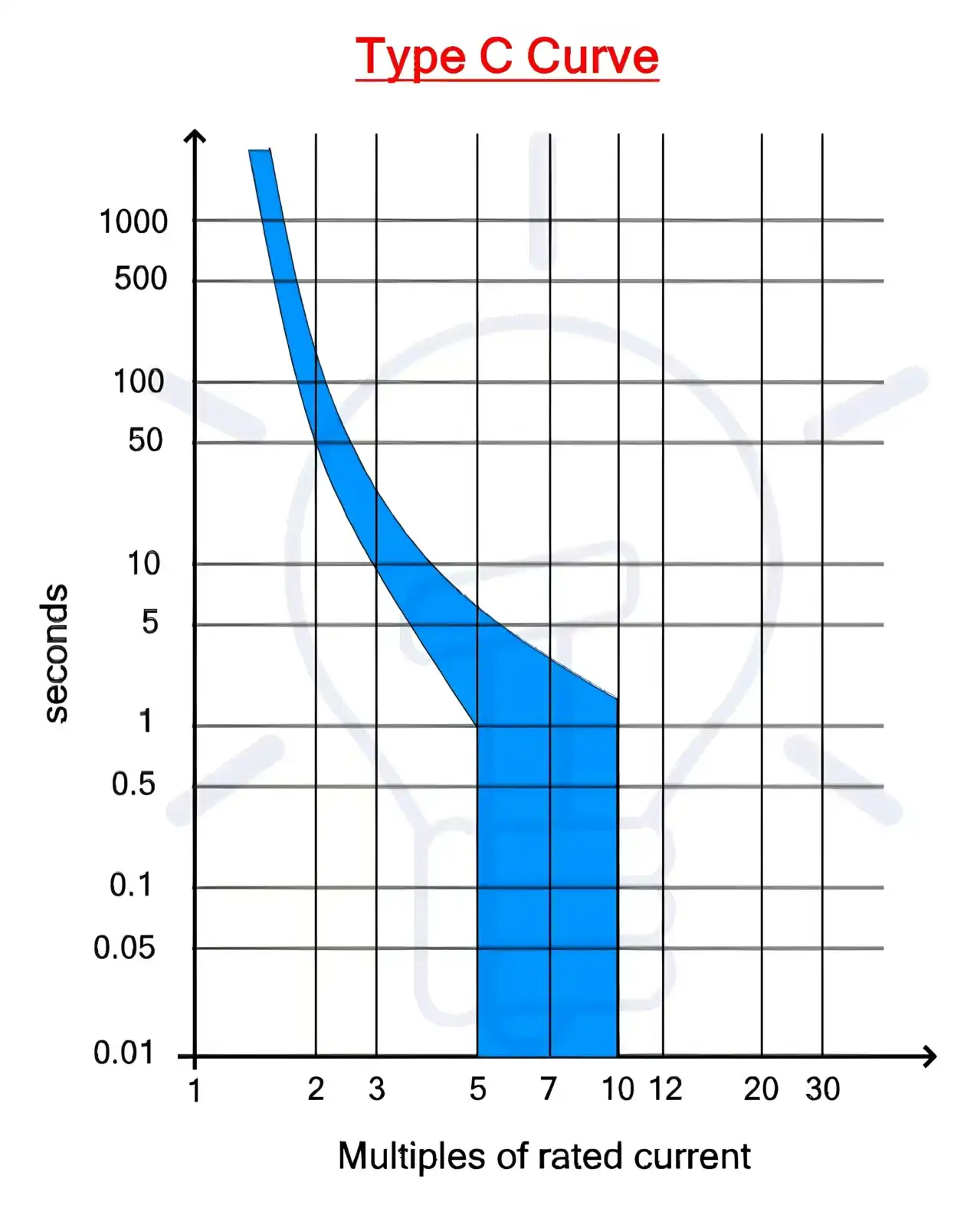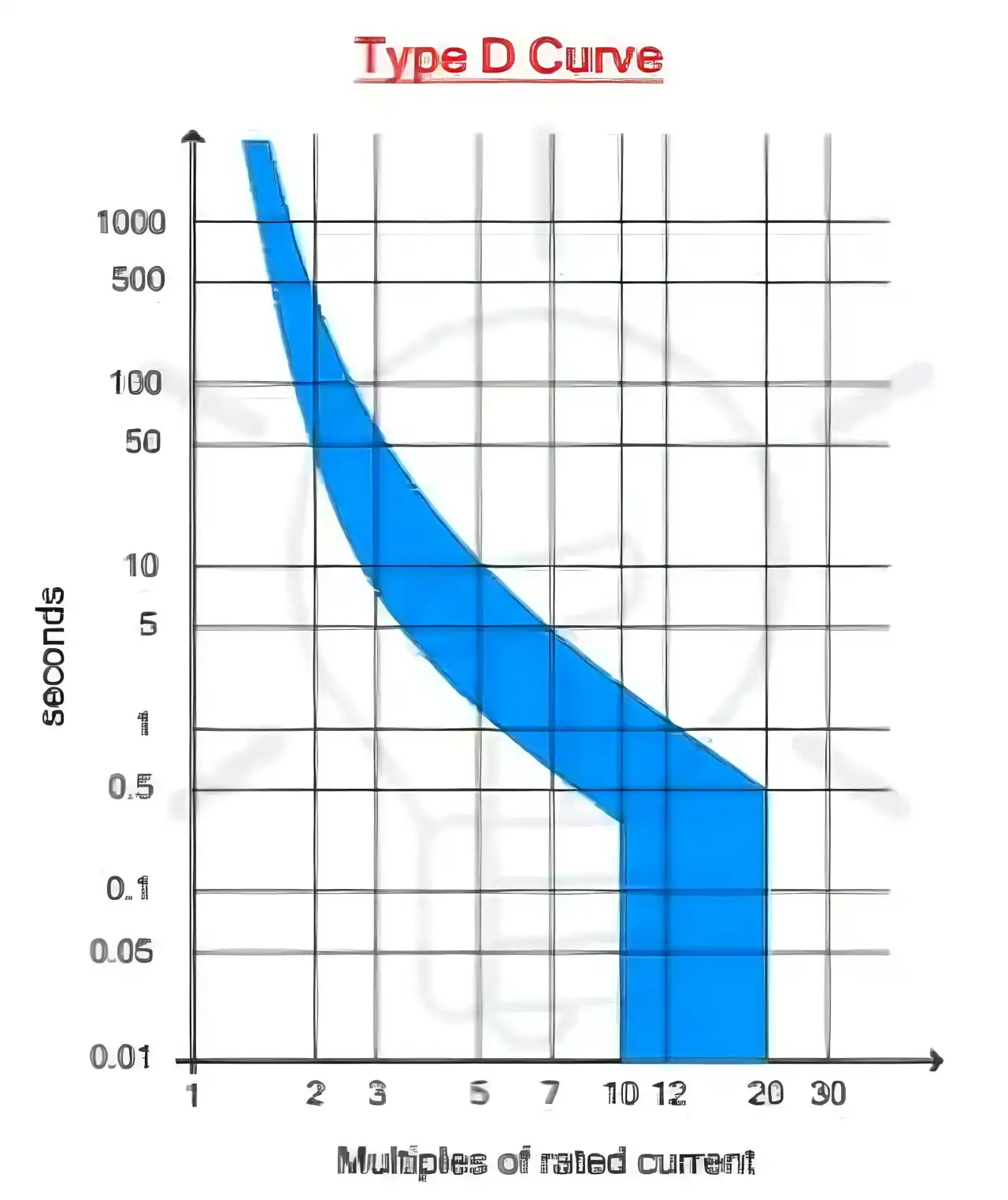Tripping curves show how fast miniature circuit breakers react to different amounts of electrical current. Each type—A, B, C, or D—has its own curve for certain loads and inrush currents. Picking the right tripping curve keeps people and equipment safe. Electricians use these curves to stop damage and fires. If you pick the wrong breaker type, it can trip too often or not protect circuits.
Key Takeaways
- Tripping curves show how quickly circuit breakers turn off power. They react to different amounts of current. This helps keep people and equipment safe.
- Type A, B, C, and D breakers trip at different current levels. Each type works best for certain loads and places.
- Type A breakers protect sensitive electronics. They are not used much today. Type B is good for homes and small appliances. Type C is used in offices and for mixed loads. Type D is best for factories and large machines.
- You must pick the right breaker for the job. Think about the load type, inrush current, and where it will be used. This keeps things safe and stops damage.
- Checking breakers often and picking them carefully is important. This helps stop breakdowns. It keeps electrical systems safe and working well.
Tripping Curves in Miniature Circuit Breakers
What Is a Tripping Curve
A tripping curve shows how quickly a miniature circuit breaker reacts to different levels of electrical current. The curve uses a graph with two axes. The horizontal axis shows multiples of the breaker’s rated current. This means the graph does not use a unit like amps but instead shows how many times the normal current is flowing. The vertical axis shows the time in seconds, using a logarithmic scale. This helps people see how fast the breaker trips at different current levels.
The curve has two main parts. The first part is the thermal trip region. In this area, the breaker responds to small overloads that last longer. The curve here is smooth and shows that higher currents make the breaker trip faster. The second part is the magnetic trip region. This part reacts to very high currents, like a short circuit. The breaker trips almost instantly in this region.
Tip: Understanding the tripping curve helps electricians choose the right miniature circuit breakers for each job.
Why Tripping Curves Matter
Tripping curves play a key role in electrical safety. They help people pick the correct miniature circuit breakers for different types of equipment and loads. If someone uses a breaker with the wrong curve, it might trip too soon or not trip at all during a fault. This can lead to equipment damage or even fire.
Each type of breaker has a set range for when it will trip. For example, Type B breakers trip at 3 to 5 times their rated current, while Type C trips at 5 to 10 times, and Type D at 10 to 20 times. These ranges serve as benchmarks for selecting the right breaker for each application.
| MCB Type | Trip Current Multiple (times rated current) | Tripping Time Range (seconds) |
|---|---|---|
| B | 3 to 5 | 0.04 to 13 |
| C | 5 to 10 | 0.04 to 5 |
| D | 10 to 20 | N/A |
| K | 8 to 12 | N/A |
| Z | 2 to 3 | N/A |
Miniature circuit breakers protect both people and equipment by responding at the right time. The tripping curve makes sure the breaker works as needed for each situation.
Breaker Types
Type A Miniature Circuit Breakers
Type A miniature circuit breakers are the most sensitive. They trip when the current is about double the rated value. Electricians use Type A breakers to protect sensitive electronics like semiconductors. These devices can break from even small extra currents. Type A breakers are not used much today. Fuses usually take their place for this job. Most homes and businesses do not have Type A breakers.
Note: Type A breakers act fast but are not seen often in normal electrical systems.
Type B Miniature Circuit Breakers
Type B miniature circuit breakers trip at 2 to 3 times the rated current. These breakers work best with resistive loads like lights and small appliances. Electricians put Type B breakers in homes a lot. But people use them less now as systems change. Type B breakers trip quickly when there is too much current. This helps keep sensitive equipment safe.
A table below shows the main features of each breaker type:
| MCB Type | Trip Current Multiple | Typical Use Case | Notes |
|---|---|---|---|
| Type A | 2 times rated current | Semiconductor protection (rarely used) | Usually replaced by fuses |
| Type B | 2-3 times rated current | Purely resistive loads, low-voltage lighting, residential | Less commonly used currently |
| Type C | 5-10 times rated current | Distribution lines, lighting circuits with larger currents | Most common for general use |
| Type D | 10-20 times rated current | Systems with large inductive loads, high inrush currents | Industrial environments |
Type C Miniature Circuit Breakers
Type C miniature circuit breakers trip at 5 to 10 times the rated value. These breakers are good for many uses. Electricians pick Type C for offices, schools, and stores. Type C breakers work with both resistive and inductive loads. This includes lights with bigger currents and small motors.
DigiKey TechForum explains how Type C breakers work. The thermal part bends a strip when there is a small overload. This takes 1 to 10 seconds, based on the current. The magnetic part acts much faster. When a big current flows, the plunger trips the breaker in about 10 milliseconds. This lets Type C breakers stop both slow and sudden extra currents. Many electricians like Type C miniature circuit breakers. They give a good mix of sensitivity and reliability.
Type D Miniature Circuit Breakers
Type D miniature circuit breakers trip at 10 to 20 times the rated value. These breakers are best for factories and big machines. Electricians use Type D breakers for things with high inrush currents. This includes large motors, transformers, and welding machines. Type D breakers let these machines start without tripping the circuit. But they still protect against dangerous faults. Factories often need Type D breakers because of heavy equipment.
⚡ Tip: Always pick the right breaker type for the equipment and load. This keeps everything safe and working well.
Comparison Table
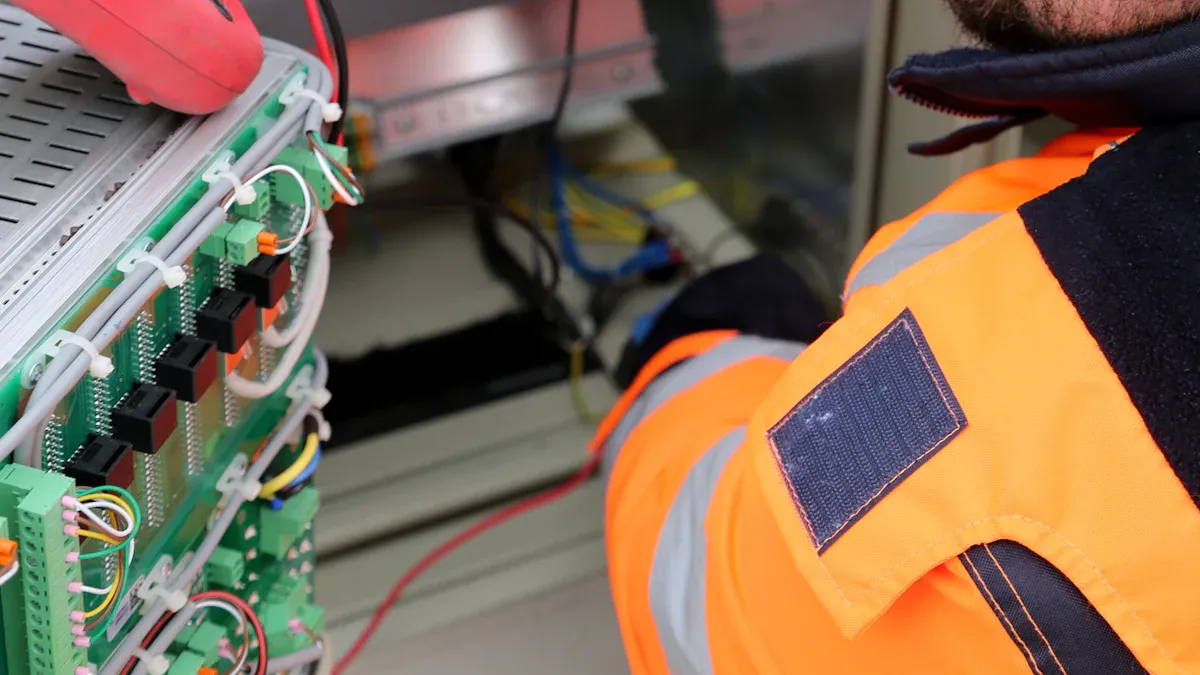
Picking the right circuit breaker type is important. It depends on how much current the equipment uses. It also depends on how fast the breaker should trip. The table below lets you compare Type A, B, C, and D miniature circuit breakers. Each type has its own tripping curve. This means each one reacts to overloads and short circuits in a special way.
| Breaker Type | Tripping Current (Times Rated) | Sensitivity | Typical Applications | Frequency of Use |
|---|---|---|---|---|
| Type A | 2 | Very High | Sensitive electronics, semiconductors | Rare |
| Type B | 2–3 | High | Lighting, small appliances, homes | Less common |
| Type C | 5–10 | Medium | Offices, schools, mixed loads | Most common |
| Type D | 10–20 | Low | Motors, transformers, factories | Industrial use |
- Type A breakers trip the fastest. They protect things that cannot take even small surges.
- Type B breakers are good for homes and easy circuits. They trip fast but let small inrush currents pass.
- Type C breakers can handle bigger surges. Electricians use them where there are mixed or higher loads.
- Type D breakers let the biggest inrush currents go through. Factories and big machines need these to work safely.
💡 Tip: Always look at the equipment and load before picking a breaker. The right breaker keeps people and things safe.
Miniature circuit breakers keep circuits safe by tripping at the right time. This table helps you see which type is best for each job.
Choosing a Breaker
Selection Factors
Picking the right breaker is not just about current rating. There are other things to think about for safety and long life. Experts suggest these steps:
- Voltage and Current Ratings: Pick a breaker that matches or is higher than the system’s voltage and current. This helps stop overloads and keeps things safe.
- Environmental Resilience: Think about where you will put the breaker. It should handle heat, cold, water, dust, and shaking. A strong breaker lasts longer and works better in tough places.
- Interrupting Capacity: The breaker’s interrupting capacity must be more than the biggest fault current. This keeps people and equipment safe from big problems.
- Metering and Monitoring: Some breakers can track how much current flows and when faults happen. These features help with fixing problems and stop sudden failures.
- Physical Integration: Make sure the breaker fits in the panel. It should be easy to reach and fix. Some breakers are made for easy upgrades later.
- Seamless Integration: Some systems need breakers that talk to other devices using Modbus or Ethernet. This lets people watch and control them from far away.
- Maintenance and Testing: Clean, check, and test breakers often. This keeps them working well and makes them last longer.
🛠️ Tip: Take care of breakers and pick them carefully. This stops surprise breakdowns and saves money on repairs.
Application Guide
The right breaker type depends on what you use it for. Type B breakers are good for lights and small home appliances. Type C breakers work well in offices, schools, and places with mixed loads. Type D breakers are best for factories and big machines that need lots of power to start. Type A breakers protect sensitive electronics but are not used much now.
Electricians check the load type, starting current, and where the breaker will go before choosing. They also think about future changes and upgrades. Good planning helps breakers keep people and equipment safe for a long time.
- Type A, B, C, and D miniature circuit breakers work in different ways. Type A trips when there are small surges. Type D can handle big inrush currents. Type B and Type C are used for most normal loads. They work between Type A and Type D.
- Picking the right breaker type keeps people and equipment safe. You must match the breaker to the load for each job.
Always look at the load type and inrush current before you pick a breaker. This helps make sure everything works safely and does not break.
If you need to purchase high-quality miniature circuit breakers, you can check out our miniature circuit breaker product line
FAQ
What does “tripping current multiple” mean?
The tripping current multiple shows how many times the normal current must flow before the breaker trips. For example, a Type C breaker with a 10-amp rating and a 5x multiple will trip at 50 amps.
Tip: Always check the breaker’s label for its tripping multiple.
Can someone use a Type D breaker in a home?
Type D breakers work best in factories or places with large machines. They allow high inrush currents. Most homes do not need this. Using a Type D breaker at home may not protect wiring or devices properly.
Why do breakers trip instantly sometimes?
Breakers trip instantly when a short circuit or very high current flows. The magnetic part inside the breaker reacts fast to stop dangerous faults. This quick action helps prevent fires and equipment damage.
How does someone know which breaker type to choose?
Electricians look at the type of load, inrush current, and where the breaker will go. They match the breaker type to the equipment and its needs. This keeps people and devices safe.
The following information may be of interest to you
What Is a Bipolar Circuit Breaker and How Does It Work
Which type of MCB is most suitable for building wiring
Miniature circuit breakers that keep homes and factories safe
Understanding a and b Contacts in Circuit Breakers
What Miniature Circuit Breakers Do and Where to Find Them

